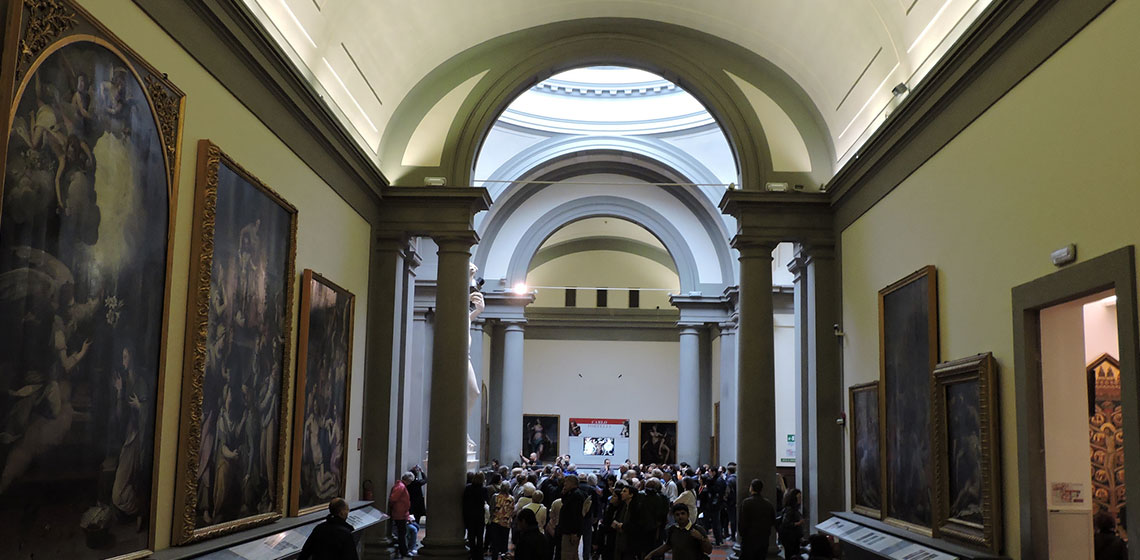
Accademia Gallery, Florence. The stuff you probably don’t know
Florence’s Accademia Gallery has far more going for it than Michelangelo’s David, a global icon who’s on everyone’s lips
The hundreds of thousands of visitors who tread the halls of the Accademia Gallery every year are on the lookout for a life-changing experience, which culminates when they meet one man-turned-statue, the David, one of the most sublime expressions of Renaissance sculpture.
Take a walk down via Ricasoli, in front of the museum entrance, and you’re sure to come across the queues of David fans waiting to get in and see the show, especially at the height of summer. (Did you know that the Accademia is the fourth most visited museum in Italy?) And they are all there for one man!
Beyond the David, the Accademia is also home to other treasures that are worth checking out. Plus, the David boasts a backstory that not everyone knows about. Here’s the stuff that you probably don’t know about the Accademia.
It has the largest number of sculptures by Michelangelo
It might seem like a boring fact, but the Accademia is the museum that has the largest number of sculptures by Michelangelo. The gallery was commissioned by Tuscan Grand Duke Leopold II as a place to house artworks for the students of the Fine Arts Academy, hence the name. After various changes, rearrangements and acquisitions, it became the “museum of Michelangelo”, with the statue of David and the Slaves, impressive examples of the “unfinished” technique.
It contains a collection of musical instruments
Did you know that the Accademia contains a vast collection of musical instruments? It showcases unique objects from private collections belonging to the Medici and Lorraine families, dating to the 17th and 19th centuries, including a 1716 Stradivarius violin and a piano made by the instrument’s inventor, Bartolomeo Cristofori, who lived in Florence at the turn of the 1700s.
In addition to the David it is home to another original statue
Just about everyone knows the David in Piazza della Signoria isn’t the original statue, but what you might not know is that there’s another original statue housed in the Accademia, a copy of which stands in the same piazza. We’re talking about Giambologna’s Rape of the Sabine Women. The copy’s in the Loggia dei Lanzi, while the unfired clay original is found in the Sala del Colosso, and it’s a true style exercise in how the movement of the human body can be shown in sculpture.
The reason why the David is here and how it got there
The David was positioned initially by the entrance into the Palazzo Vecchio, keeping guard over the freedom of the Florentine Republic, right where the copy stands today. Then it was moved to put an end to its inevitable wear and tear caused by the elements.
The journey wasn’t an easy one. Just picture a giant like that being moved from Piazza della Signoria to the Accademia! Next to the statue there’s even a model of the equipment used to transport the statue in 1873. For the occasion a special wooden cart was designed, which could slide on top of tracks: the move took several days. It was an event that many Florentines and foreigners followed with trepidation until the giant reached its final destination. Since the summer of 1873 (it was actually placed on its present-day podium a few years later), the David has been the star of the Accademia Gallery.






 All the services are provided by local merchants
All the services are provided by local merchants By using this site you support Florence
By using this site you support Florence We offer products with high-quality standards
We offer products with high-quality standards You stay sustainable
You stay sustainable It's a 100% trustworthy website
It's a 100% trustworthy website